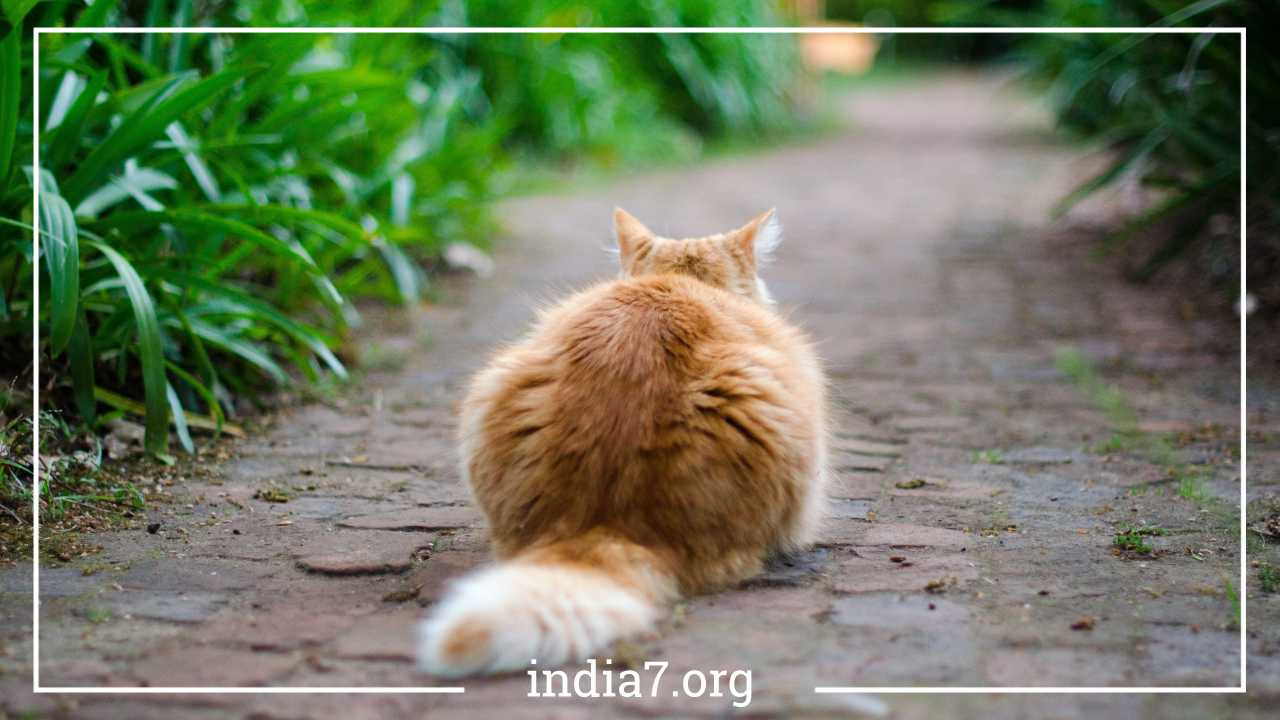Effective Strategies for Keeping Cats Out of Garden

Keeping Cats Out of Garden
Maintaining a beautiful garden is a rewarding endeavor, but it can be frustrating when cats decide to use it as their personal playground. The presence of these feline intruders can lead to damaged plants, unsightly digging, and unwanted messes.
Fortunately, there are various strategies and methods you can employ to keep cats out of your garden. In this comprehensive guide, we will explore these techniques in detail, helping you create a cat-free oasis for your plants and peace of mind.
Understanding the Challenge
Before delving into the various strategies for deterring cats from your garden, it’s essential to understand why cats are drawn to gardens in the first place. Cats are naturally curious creatures, and your garden may offer an appealing environment for several reasons:
- Hunting Ground: Cats are natural hunters, and your garden may attract small rodents, birds, or insects, making it an ideal hunting ground.
- Comfort and Shelter: Gardens often provide cozy spots for cats to rest and seek shelter from the elements.
- Marking Territory: Cats have a territorial nature and may view your garden as an extension of their domain, leading them to mark it with urine or by scratching.
- Bathroom Convenience: Gardens can also serve as convenient outdoor litter boxes for cats.
Securing Your Boundaries
Your first line of defense against garden-invading cats is to ensure that your garden boundaries are secure. Cats are remarkably agile creatures, and they can squeeze through surprisingly small gaps. Here’s what you should do:
- Inspect Your Fence: Carefully examine your garden’s perimeter fence for any gaps, holes, or openings that cats could use to gain access. Even a small opening can be an invitation for them.
- Block Gaps and Openings: Promptly block any identified gaps or openings using appropriate materials. Mesh or chicken wire can be effective for this purpose. Make sure to secure it tightly to prevent cats from pushing their way through.
- Consider Top Barriers: Since cats are skilled jumpers, it’s advisable to install string or taut wire across the top of your fence. This will discourage them from attempting to leap over.
Dogs as Deterrents
Many garden owners choose to employ dogs as a natural deterrent to keep cats away. Dogs, especially certain breeds known for their dislike of cats, can be highly effective in deterring feline intruders. Here are some key points to consider:
- Select Appropriate Breeds: Some dog breeds have a strong aversion to cats. Breeds such as pit bulls and Dobermans are well-known for their antipathy towards felines. The mere presence of these dogs can make cats think twice about entering your garden.
- Training and Supervision: If you decide to use a dog as a deterrent, it’s essential to train and supervise your dog in the garden. This ensures that your dog behaves appropriately and doesn’t harm the garden itself.
- Dog-Friendly Garden Design: If you already have a dog or plan to get one, consider designing your garden to accommodate your canine companion. This can include designated play areas and paths that discourage dogs from trampling on delicate plants.
Water as a Cat Repellent
Cats typically dislike water, making it a useful tool for encouraging them to leave your garden. Here’s how to use water effectively as a cat repellent:
- Squirt with a Garden Hose: If you spot a cat in your garden, a well-aimed squirt with a garden hose can startle the cat and prompt it to run away. This can be a particularly effective method, especially if you catch the cat in the act.
- Bucket of Water: Keeping a bucket of water handy allows you to quickly respond when you see a cat in your garden. Tossing water in the cat’s direction can have a similar deterrent effect.
- Consistency is Key: To reinforce the message that your garden is off-limits to cats, be consistent in your use of water as a deterrent. If the cat returns, repeat the process until it gets the idea.
Protecting Plants from Cats
While keeping cats out of your garden is crucial, it’s equally important to protect your plants from their potential mischief. Cats may dig up soil, scratch at plant roots, or use your garden as a litter box. Here are some strategies to safeguard your plants:
- Mothballs: Mothballs emit a strong odor that cats find unpleasant. Scatter mothballs strategically around your plants, garden borders, or along the fence to create a barrier that cats are unlikely to cross.
- Natural Repellents: There are several natural repellents that can deter cats. Consider using cayenne peppers, tobacco, lavender oil, citronella oil, mustard oil, or lemon grass oil in and around your garden to discourage feline intruders.
- Mulching: Applying mulch to your garden beds not only helps retain moisture and suppress weeds but can also make it less appealing for cats to dig. Choose mulch materials that are uncomfortable for cats, such as pine cones or prickly bark.
- Raised Beds: Constructing raised garden beds can make it more challenging for cats to access your plants. Cats often prefer to dig in loose soil, so raising your beds can be a helpful deterrent.
- Cat-Friendly Alternatives: Consider creating a designated area in your yard where cats are welcome to dig and play. Fill this area with soft, loose soil or sand to attract cats away from your garden.
Motion-Activated Sprinklers
Motion-activated sprinkler systems offer an innovative and highly effective way to deter cats from your garden. These systems work by detecting movement and then releasing a sudden burst of water. Here’s how they work:
- Installation: Purchase a motion-activated sprinkler system from your local hardware or lawn store. Install the sprinkler in your garden, ensuring it covers the areas where cats are most likely to enter.
- Detection and Response: When a cat enters the monitored area, the motion sensor detects its presence. Almost instantly, the sprinkler activates and releases a jet of water towards the cat. The sudden spray startles and discourages the cat from returning.
- Repeat Exposure: Most cats learn quickly from the experience and will avoid the area after a few exposures to the motion-activated sprinkler.
High-Frequency Sound Devices
Another technology-driven method for keeping cats out of your garden involves the use of high-frequency sound devices. These devices emit sounds that cats find unsettling but are generally inaudible to humans. Here’s how you can use them:
- Device Types: High-frequency sound devices come in various models, including those that emit sounds continuously and those that are motion-activated. Choose a model that suits your garden’s size and layout.
- Placement: To effectively deter cats, ensure that the sound device covers the entire garden area. Proper placement is crucial for maximum effectiveness.
- Inaudible to Humans: The frequencies emitted by these devices are typically above the range of human hearing, so they won’t be annoying or disruptive to you and your family.
Commercial Repellents
Commercial repellents designed specifically to deter cats from gardens are available in various forms, including sprays, granules, and powders. While these products can be effective, there are some important considerations to keep in mind:
- Scent-Based Deterrents: Most commercial cat repellents use scents that cats find unpleasant. These scents can vary but often include natural ingredients like citrus, pepper, or herbs. Apply these repellents strategically around your garden to create an unwelcome environment for cats.
- Avoid Food Crop Areas: It’s crucial to avoid using commercial repellents near areas where you grow food crops. These products often contain chemicals that can potentially contaminate your produce.
- Varied Options: Visit your local department store or garden center to explore the range of commercial repellents available. Some products may also deter other unwanted animals from your garden.
Conclusion
Maintaining a cat-free garden requires a combination of strategies and methods to deter feline intruders effectively. By securing your garden boundaries, utilizing dogs as deterrents, using water, applying natural repellents, protecting your plants, and considering technological solutions like motion-activated sprinklers and high-frequency sound devices, you can create a garden that is off-limits to cats.
Remember that consistency is key when implementing these methods. Cats are persistent animals, and it may take time for them to learn that your garden is not a welcome playground. With patience and the right approach, you can enjoy a beautiful garden without the disruption caused by unwanted feline visitors.
In conclusion, maintaining a cat-free garden is a achievable goal with the right strategies and persistence. Whether you choose to secure your boundaries, enlist the help of canine companions, use water as a deterrent, employ natural repellents, or explore technological solutions, the key is to create an environment that cats find unwelcoming. By doing so, you can protect your garden, your plants, and your sanity while enjoying the beauty of your outdoor space.



